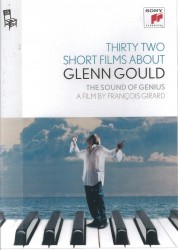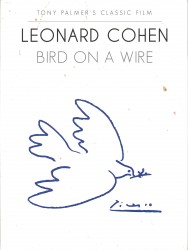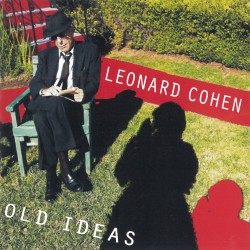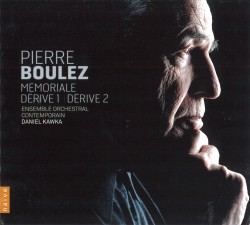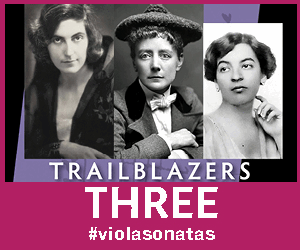EDITOR’S CORNER - July 2012
If i keep it brief, I’ll have room for all seven of the discs that have been in rotation on my player over the past month …
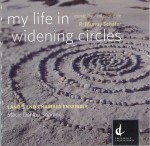 First there were a couple of hot-off-the-press releases from the Canadian Music Centre. My Life in Widening Circles (Centrediscs CMCCD 17712) features music of R. Murray Schafer, both new and old, performed by Land’s End Chamber Ensemble. The disc begins with a string trio written in 2006. Quasi tonal and dramatic, with echoes of previous Schafer (and Mahler) motifs, it is a beautiful addition to the repertoire of this neglected combination of instruments (violin, viola, cello). The ensemble playing is immaculate and the blending of sound is enhanced by the fact that all three instruments were constructed by the same luthier, Christopher Sandvoss, who was also the producer of the recording session. Book-ending this collection is another 2006 composition written for guest soprano Stacie Dunlop, Six Songs from Rilke’s Book of Hours.I find the juxtaposition of purely instrumental sounds and the powerful voice of Dunlop quite jarring, but as both works were written for Land’s End I understand why they wanted to showcase them together. In between, we hear Dunlop in a set of songs from very early in Schafer’s career, Kinderlieder from 1958, and core member John Lowry in two works for violin and piano: Wild Bird, originally for violin and harp, which was written for Jacques Israelievitch’s 50th birthday celebrations, and Duo for Violin and Piano from 2008. Curiously there are three pianists listed in the credits, but I have been unable to discern who actually plays on which cuts. The Duo received a 2011 Juno Award for Classical Composition of the year in its recording by Duo Concertante for whom it was written. It is an all too rare opportunity to have a second recording to compare with the first, but a little surprising to find them both on Centrediscs in such close proximity.
First there were a couple of hot-off-the-press releases from the Canadian Music Centre. My Life in Widening Circles (Centrediscs CMCCD 17712) features music of R. Murray Schafer, both new and old, performed by Land’s End Chamber Ensemble. The disc begins with a string trio written in 2006. Quasi tonal and dramatic, with echoes of previous Schafer (and Mahler) motifs, it is a beautiful addition to the repertoire of this neglected combination of instruments (violin, viola, cello). The ensemble playing is immaculate and the blending of sound is enhanced by the fact that all three instruments were constructed by the same luthier, Christopher Sandvoss, who was also the producer of the recording session. Book-ending this collection is another 2006 composition written for guest soprano Stacie Dunlop, Six Songs from Rilke’s Book of Hours.I find the juxtaposition of purely instrumental sounds and the powerful voice of Dunlop quite jarring, but as both works were written for Land’s End I understand why they wanted to showcase them together. In between, we hear Dunlop in a set of songs from very early in Schafer’s career, Kinderlieder from 1958, and core member John Lowry in two works for violin and piano: Wild Bird, originally for violin and harp, which was written for Jacques Israelievitch’s 50th birthday celebrations, and Duo for Violin and Piano from 2008. Curiously there are three pianists listed in the credits, but I have been unable to discern who actually plays on which cuts. The Duo received a 2011 Juno Award for Classical Composition of the year in its recording by Duo Concertante for whom it was written. It is an all too rare opportunity to have a second recording to compare with the first, but a little surprising to find them both on Centrediscs in such close proximity.
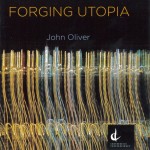 The other new Centrediscs release is very different in nature. Forging Utopia (CMCCD 17612) features four powerful orchestral works by Vancouver composer John Oliver, also know for his electroacoustic compositions and as an accomplished guitarist. The works presented here span more than a decade and are performed by orchestras from Vancouver, Windsor and Ottawa. The title track was commissioned by the National Arts Centre Orchestra’s Generation XYZ festival in 1998 and reflects Oliver’s thoughts and feelings about the world at the turn of the new millennium, striving to “forge a future for music, rather than dwell too much on the past.” The CBC commission Unseen Rain, which takes the mystical writings of the Sufi poet Rumi for its inspiration and texts, features renowned opera mezzo Judith Forst in full voice and splendour. The settings are mostly meditative yet manage to convey the dense textures of the poetry. Face in the Abstract, whichtakes as its premise the multi-layered, quasi-narrative visual art of Johannes Deutsche and Anselm Keefer, seems a convincing aural representation of a similar approach to art. The most extended work, Raven Steals the Light, is an effective tone poem wordlessly re-telling the dramatic Native American story of the same name as told and illustrated by Bill Reid and Robert Bringhurst. All in all this is an important addition to the Canadian orchestral discography and a timely reminder that there are a number of composers in this country who have created a significant body of large scale works.
The other new Centrediscs release is very different in nature. Forging Utopia (CMCCD 17612) features four powerful orchestral works by Vancouver composer John Oliver, also know for his electroacoustic compositions and as an accomplished guitarist. The works presented here span more than a decade and are performed by orchestras from Vancouver, Windsor and Ottawa. The title track was commissioned by the National Arts Centre Orchestra’s Generation XYZ festival in 1998 and reflects Oliver’s thoughts and feelings about the world at the turn of the new millennium, striving to “forge a future for music, rather than dwell too much on the past.” The CBC commission Unseen Rain, which takes the mystical writings of the Sufi poet Rumi for its inspiration and texts, features renowned opera mezzo Judith Forst in full voice and splendour. The settings are mostly meditative yet manage to convey the dense textures of the poetry. Face in the Abstract, whichtakes as its premise the multi-layered, quasi-narrative visual art of Johannes Deutsche and Anselm Keefer, seems a convincing aural representation of a similar approach to art. The most extended work, Raven Steals the Light, is an effective tone poem wordlessly re-telling the dramatic Native American story of the same name as told and illustrated by Bill Reid and Robert Bringhurst. All in all this is an important addition to the Canadian orchestral discography and a timely reminder that there are a number of composers in this country who have created a significant body of large scale works.
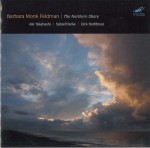 A third disc devoted to the music of a single Canadian composer, in this case Barbara Monk Feldman, also captured my attention this past month. Released on the American contemporary music label Mode Records (mode 244), it features performances by Aki Takahashi and the Sabat/Clarke duo with percussionist Dirk Rothbrust. Deeply rooted in the sensibility of her teacher/mentor/late husband Morton Feldman, the music is delicate, pristine and precise. I have found it takes a special mood and patience to appreciate this school of composition, but when that state can be achieved the music takes on a wonderful trancelike and even transcendental quality.
A third disc devoted to the music of a single Canadian composer, in this case Barbara Monk Feldman, also captured my attention this past month. Released on the American contemporary music label Mode Records (mode 244), it features performances by Aki Takahashi and the Sabat/Clarke duo with percussionist Dirk Rothbrust. Deeply rooted in the sensibility of her teacher/mentor/late husband Morton Feldman, the music is delicate, pristine and precise. I have found it takes a special mood and patience to appreciate this school of composition, but when that state can be achieved the music takes on a wonderful trancelike and even transcendental quality.
The first piece, The Northern Shore, is scored for violin, piano and various percussion instruments. As it unfolds slowly over nearly half an hour with lush piano textures and mostly resonant mallet percussion instruments with chimes and bell sounds, I am left confused by the choice of such a dry timbre for the violin. While the use of pure, vibrato-less pitch is understandable, I believe it is still possible to achieve a fuller tone that would better complement the other members of the trio, but here Marc Sabat, and presumably the composer, have opted for a thin and reedy sound. My other hesitancy from fully embracing the piece is that, sparse and slow though it is, once I have suspended my usual expectations and relaxed to the point of immersion in this near timeless state, I feel that the piece would actually be more effective and convincing at half the pace, giving more time for each group of notes to fully decay before proceeding to the next.
I have no such concern about Takahashi’s performance of In the Small Time of a Desert Flower, perhaps because of the monochromatic, though again very lush, texture of the solo piano. Once again taking nearly half an hour to develop, the immaculate pacing and balance of the piece make it a crystalline gem.
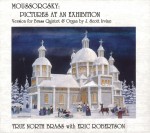 Mussorgsky’s Pictures at an Exhibition has been orchestrated so often and effectively that it is easy to forget its origin as a solo piano composition. As I was listening to J. Scott Irvine’s version for brass quintet and organ as recorded by the True North Brass and Eric Robertson (TNB005 www.truenorthbrass.com) I found myself wondering if I missed the strings of the original version. It took me a minute to realize that my memory was being tricked into believing Pictures to have been conceived as an orchestral piece.
Mussorgsky’s Pictures at an Exhibition has been orchestrated so often and effectively that it is easy to forget its origin as a solo piano composition. As I was listening to J. Scott Irvine’s version for brass quintet and organ as recorded by the True North Brass and Eric Robertson (TNB005 www.truenorthbrass.com) I found myself wondering if I missed the strings of the original version. It took me a minute to realize that my memory was being tricked into believing Pictures to have been conceived as an orchestral piece.
Ravel’s orchestration (commissioned by Serge Koussevitsky in 1922) has become the most familiar, but there have been literally dozens of different orchestrations of Mussorgsky’s remembrance of his friend, artist Viktor Hartmann, since it was composed in 1874. For comparison’s sake I went back to the 1996 recording by the Toronto Symphony Orchestra using Jukka-Pekka Saraste’s performing edition (Finlandia 2 14911) which drew on the orchestrations of Sergei Gortschakov (1920s) and Leo Funtek (1950s). While there is a bit less lushness in Irvine’s “orchestra”— the Casavant organ at All Saints’ Kingsway Anglican Church — the instrument brings its own fullness and vast range of colour to the mix in a very effective way. And due to the acoustic properties of the church, the engineering skills of Anton Kwiatkowski, Irvine’s arrangement and the excellence of the players, the brass quintet is positively convincing in its orchestral range. Congratulations to all concerned!
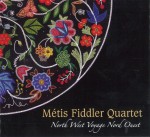 The next disc also involves arrangements, but this time in a more idiomatic way. The Métis Fiddler Quartet is comprised of four siblings who appear to be in their teenage years, although there is very little personal information included in the notes, which exclude even their surname. North West Voyage/Voyage Nord Ouest (MFQ1201 www.metisfiddlerquartet.com) features Alyssa, Nicholas, Conlin and Danton [Delbaere-Sawchuk] playing fiddles, guitar and cello in their own arrangements of traditional and recently composed fiddle tunes, with particular emphasis on the aboriginal fiddle tradition. This album honours elders John Arcand (Métis, SK), James Flett and Lawrence “Teddy Boy” Houle (both Ojibwe, MB). The playing is exceptional and the music is more diverse than one might expect. Of particular note is the arrangement of the traditional Trade Song which begins with a prologue in a haunting and surprisingly modern tonality before progressing into more familiar ground. The cello, a somewhat surprising addition to the traditional instrumentation, is used effectively as both a pizzicato bass and a full-voice bowed melody instrument. This disc will be at the top of the pile next to my CD player this summer.
The next disc also involves arrangements, but this time in a more idiomatic way. The Métis Fiddler Quartet is comprised of four siblings who appear to be in their teenage years, although there is very little personal information included in the notes, which exclude even their surname. North West Voyage/Voyage Nord Ouest (MFQ1201 www.metisfiddlerquartet.com) features Alyssa, Nicholas, Conlin and Danton [Delbaere-Sawchuk] playing fiddles, guitar and cello in their own arrangements of traditional and recently composed fiddle tunes, with particular emphasis on the aboriginal fiddle tradition. This album honours elders John Arcand (Métis, SK), James Flett and Lawrence “Teddy Boy” Houle (both Ojibwe, MB). The playing is exceptional and the music is more diverse than one might expect. Of particular note is the arrangement of the traditional Trade Song which begins with a prologue in a haunting and surprisingly modern tonality before progressing into more familiar ground. The cello, a somewhat surprising addition to the traditional instrumentation, is used effectively as both a pizzicato bass and a full-voice bowed melody instrument. This disc will be at the top of the pile next to my CD player this summer.
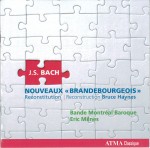 One of the highlights of the 2011 Montreal Baroque Festival was a performance by Bande Montréal Baroque under Eric Milnes’ direction of six New Brandenburg Concertos as reconstructed by the late Bruce Haynes. Drawing on the vocal works of Johann Sebastian Bach and taking his premise from the writings of Telemann, who suggested that instruments could occasionally be substituted for voices in cantatas, Haynes has created new orchestral pieces modeled on the six existing Brandenburgs. ATMA has released these performances (ACD2 2565) and now we are left to decide whether the world really needs more transcriptions of the works of the master. Haynes suggests that they are offered more in the “tongue-in-cheek spirit of the famous recordings by the Swingle Singers or of Wendy Carlos’ Switched On Bach” and that they should not be taken too seriously. Because the music is authentic Bach and the instruments replacing the voices are carefully chosen with historical context in mind, I find the “experiment” to be a success for the most part. My main qualms are the extent to which the “new” concertos mirror the original six in instrumentation and form, right down to the third having only a cadence in place of a full second movement. All in all, however, I find the music satisfying and the recording sustained my interest right up until the last concerto, which seemed somehow to lose steam as it progressed. Completely familiar and unfamiliar at the same time, this music will be a welcome addition to anyone who can’t get enough Bach.
One of the highlights of the 2011 Montreal Baroque Festival was a performance by Bande Montréal Baroque under Eric Milnes’ direction of six New Brandenburg Concertos as reconstructed by the late Bruce Haynes. Drawing on the vocal works of Johann Sebastian Bach and taking his premise from the writings of Telemann, who suggested that instruments could occasionally be substituted for voices in cantatas, Haynes has created new orchestral pieces modeled on the six existing Brandenburgs. ATMA has released these performances (ACD2 2565) and now we are left to decide whether the world really needs more transcriptions of the works of the master. Haynes suggests that they are offered more in the “tongue-in-cheek spirit of the famous recordings by the Swingle Singers or of Wendy Carlos’ Switched On Bach” and that they should not be taken too seriously. Because the music is authentic Bach and the instruments replacing the voices are carefully chosen with historical context in mind, I find the “experiment” to be a success for the most part. My main qualms are the extent to which the “new” concertos mirror the original six in instrumentation and form, right down to the third having only a cadence in place of a full second movement. All in all, however, I find the music satisfying and the recording sustained my interest right up until the last concerto, which seemed somehow to lose steam as it progressed. Completely familiar and unfamiliar at the same time, this music will be a welcome addition to anyone who can’t get enough Bach.
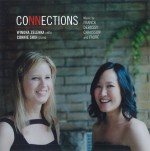 I must confess that although I am a great fan of the cello and of the music of Debussy, I’ve never quite been able to “get” the Sonata for Cello and Piano. I first heard it performed by Rostropovich at the George Weston Recital Hall in the early years of that remarkable establishment. It was a great recital, but I was left scratching my head at the work which seemed devoid of any of those things which I had come to think of as Debussy. Two decades later I am still at a loss to understand the piece, one of his very few forays into the world of chamber music, but at least it is starting to sound familiar. It is this sonata that Winona Zelenka and Connie Shih have chosen to begin their recording Connections (Marquis MAR 81427) which includes music by four “connected” French composers of the late 19th century. They certainly play the Debussy with conviction and don’t show any signs of confusion in their approach, so perhaps it’s just me…
I must confess that although I am a great fan of the cello and of the music of Debussy, I’ve never quite been able to “get” the Sonata for Cello and Piano. I first heard it performed by Rostropovich at the George Weston Recital Hall in the early years of that remarkable establishment. It was a great recital, but I was left scratching my head at the work which seemed devoid of any of those things which I had come to think of as Debussy. Two decades later I am still at a loss to understand the piece, one of his very few forays into the world of chamber music, but at least it is starting to sound familiar. It is this sonata that Winona Zelenka and Connie Shih have chosen to begin their recording Connections (Marquis MAR 81427) which includes music by four “connected” French composers of the late 19th century. They certainly play the Debussy with conviction and don’t show any signs of confusion in their approach, so perhaps it’s just me…
Chausson’s Piece, Op.39 is a “wistful gem” in Zelenka’s words and it is nicely complemented by Fauré’s “lightning fast” Papillion, Op.77. But herein lies one of my own pet peeves. This “Butterfly” is darting around like a hummingbird rather than a Monarch or the familiar cabbage butterflies that we are used to seeing. Perhaps it is a Red Admiral, but at any rate it is atypical of the genus as far as I’m concerned, reminiscent of The Flight of the Bumblebee when used as a virtuosic showpiece. Have these people ever seen a “Bumble” bee? It’s about the clumsiest creature to take to the air and I’ve heard that from an engineering standpoint it shouldn’t be able to fly at all… But please excuse my diatribe. Inthe case of Papillon my complaint is with the composer not the players because I have compared a number of performances and the general consensus is that this is meant to be a moto perpetuo. (By the way, I find Fauré’s song The Butterfly and the Flower a much better depiction of a butterfly in flight.)
The final work on the disc is the wonderful Sonata in A Major originally for violin and piano by César Franck. This is a truly great piece of music and is totally convincing in its cello adaption. It is often paired with the first Fauré violin sonata in its cello arrangement and I’m glad to be presented with a different context in which to hear it. Zelenka and Shih play the Franck with passion and nuance and it makes a strong finish to this thoughtful and well recorded disc.
We welcome your feedback and invite submissions. CDs and comments should be sent to: The WholeNote, 503–720 Bathurst St., Toronto ON M5S 2R4. We also encourage you to visit our website, thewholenote.com, where you can find added features including direct links to performers, composers and record labels, “buy buttons” for online shopping and additional, expanded and archival reviews.
— David Olds, DISCoveries Editor
discoveries@thewholenote.com


